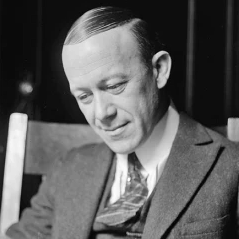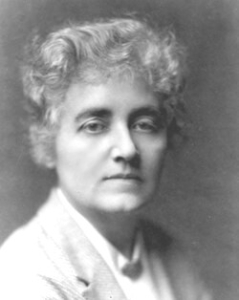REVIEW POTPOURRI: Sir Andrew Davis; Hobo Jack Turner; Mary Ellen Chase
 by Peter Cates
by Peter Cates
Sir Andrew Davis
William Walton: Belshazzar’s Feast; Ralph Vaughan Williams: Tallis Fantasia. Sir Andrew Davis conducting the BBC Symphony Orchestra and Chorus. BBC Music Magazine BBC MM83, CD, recorded 1998-1999.
The late Sir Andrew Davis (1944-2024) first came to my attention just over 50 years ago with a really good record of the Shostakovich 10th Symphony played by the London Philharmonic Orchestra. What most impressed me was the manner in which he allowed that hyper-intense masterpiece to breathe naturally, unlike the New York Philharmonic recording under Dimitri Mitropoulos which was a blowtorch in its thrilling from beginning to end eloquence.
However, later Davis recordings from the 1980s proved to be a mixed bag. His conducting of the Grieg Peer Gynt incidental music, Dvorak 8th Symphony, Faure’s Requiem, Handel’s Messiah, and Holst The Planets – each of these works also important in my listening experiences – tended to be quite boring. The Mars movement of the Planets, itself a brilliantly brutal piece of savage rhythms became a sleeping pill in Davis’s performance.
Whereas the Maestro recorded really beautiful and powerful performances of Dvorak’s 5th and 6th Symphonies and the Sibelius 2nd, itself an absolute gem among the several other great Sibelius 2nds. During a 1981 interview with Sir Alexander Gibson, in Houston, himself responsible for putting Scotland on the classical music map as Music Director of the Scottish National Orchestra and Opera for 25 years, he spoke without naming names of these up and coming mediocrities among conductors who were being proclaimed as “shining stars of the firmament” but mentioned Davis and Simon Rattle as two very gifted young conductors well worth watching.
The above CD contains works by two of England’s leading 20th century composers- Ralph Vaughan Williams’s Fantasia on a Theme by Thomas Tallis and William Walton’s oratorio Belshazzar’s Feast, itself based upon an incident in the Book of Daniel.
The Fantasia is scored for strings and possesses a heavenly beauty that is unique while Belshazzar’s has a massive orchestra and two choirs and is one very exhilarating display piece in its depiction of an evil king hosting an orgy of eating, drinking and some other activities that need not be mentioned and God’s displeasure with this monarch manifests itself with destruction of everybody there that evening.
Sir Andrew did some of his finest conducting here, fully relishing the complicated rhythms and sonorities of the oratorio and the exquisite strings of the Fantasia.
The Maestro also left two distinguished recordings of Richard Strauss’s brilliant celebration of his own narcissism, Ein Heldenleben, translated as A Hero’s Life; one of them an LP with the Toronto Symphony from more than 30 years ago when he was its music director and a CD from the last ten years when he held the same job with the Melbourne Symphony.
Hobo Jack Turner
Hobo Jack Turner – I’m Glad I’m a Bum; When It’s Springtime in the Rockies. Velvet Tone 2128-V, recorded March 19, 1930, ten inch 78.
Hobo Jack Turner was a pseudonym for a very popular 1920s and ’30s singer and radio personality Ernest Hare (1883-1939) and who teamed up with Billy Jones (1889-1940) to form the also then well-known but now long forgotten Happiness Boys.
On the above shellac disc, Hare is a singing, guitar strumming troubadour performing two selections that appeared just one year after the depression began in the U.S., both of them in a most timely manner conveying a mixture of false cheer at being Glad I’m a Bum and the promise of perhaps being able to live happily in Colorado’s Springtime Rockies doing productive work, being married and raising a family. (One other popular folk song from those years was Burl Ives’s Big Rock Candy Mountain.)
This 78 is a pleasant one from the dime store Velvet Tone record label.
Mary Ellen Chase
In her 1939 autobiography A Goodly Fellowship, Blue Hill native Mary Ellen Chase (1887-1973) described her village as one of numerous such small Maine coastal villages via which “the onrush of summer residents and tourists, who were soon to afford the one means of livelihood to most coast towns, had in those days hardly begun…and the nearest bank was fourteen miles away, a two-hour journey by horse and carriage through hilly country….Eggs were ten cents a dozen, milk five cents a quart, cod and haddock three cents a pound.”
.
Responsible journalism is hard work!
It is also expensive!
If you enjoy reading The Town Line and the good news we bring you each week, would you consider a donation to help us continue the work we’re doing?
The Town Line is a 501(c)(3) nonprofit private foundation, and all donations are tax deductible under the Internal Revenue Service code.
To help, please visit our online donation page or mail a check payable to The Town Line, PO Box 89, South China, ME 04358. Your contribution is appreciated!





Leave a Reply
Want to join the discussion?Feel free to contribute!